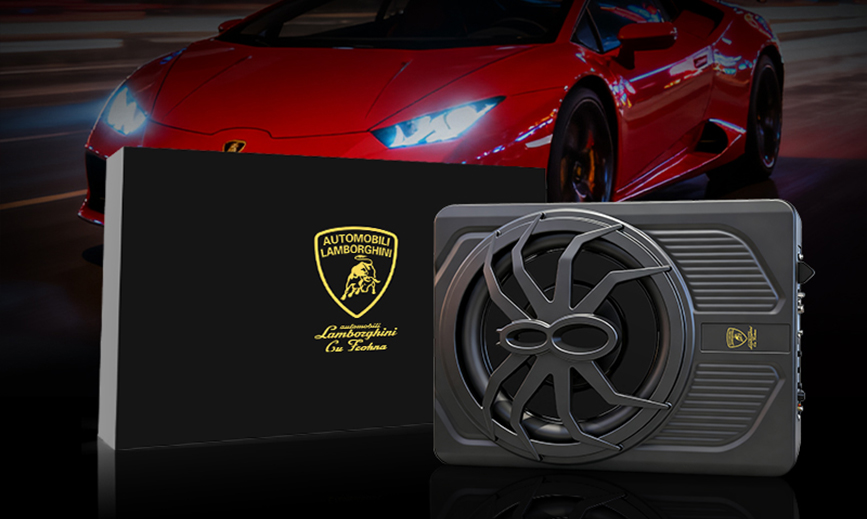In-Vehicle Display Content Publishing and Usage Guide
In-vehicle Displays: The Multimedia Center and Content Distribution Guide for Smart Cockpits In-vehicle displays have evolved from simple information display units into the core interactive hub of smart cockpits. With the development of intelligent and connected vehicles, in-vehicle displays not only provide basic navigation functions but also integrate multimedia entertainment, real-time information, and internet services, creating a safer, more convenient, and enjoyable travel experience for drivers and passengers. This article will delve into the content distribution functions, usage tips, and future trends of in-vehicle displays and introduce BOYUE's innovative solutions in the field of in-vehicle displays.
I. Content Distribution Functions of In-vehicle Displays
1. Real-time Navigation and Intelligent Route Planning In-vehicle displays provide real-time traffic updates and dynamic route planning through a GPS/BeiDou dual-mode positioning system. Drivers can send their destination to the display via smartphone connectivity (such as Apple CarPlay or Android Auto), and the system automatically calculates the optimal route and displays the remaining distance, estimated arrival time, and traffic congestion alerts. In intelligent connected vehicles, navigation data is also integrated with ADAS (Advanced Driver Assistance Systems), providing lane-level guidance and safety warnings through the display.
2. Multimedia Entertainment Playback
Modern in-vehicle displays support various audio and video formats. Users can connect mobile devices via Bluetooth, USB, or in-vehicle Wi-Fi to play music, movies, and other entertainment content. Multi-screen linkage technology allows content to be synchronized to the passenger screen or rear entertainment screen, meeting passengers' personalized needs. For example, BOYUE's in-vehicle display is compatible with high-definition video decoding and surround sound technology, creating an immersive audio-visual experience for users.
3. Real-time Information Integration (News, Weather, and Internet Services)
Through 4G/5G network connectivity, the in-vehicle display can push real-time news headlines, weather forecasts, and stock market updates. This information is displayed via voice broadcast or a card-style interface, ensuring drivers can access key information while focusing on road conditions. BOYUE displays also support customized information feeds, allowing users to set displayed content according to their preferences, such as travel reminders or local service recommendations.
II. In-vehicle Display Usage Tips and Optimization Suggestions
1. Familiarize Yourself with the Personalized Interface
Different car models have different display interface layouts (e.g., desktop, card-style, or grid-style maps). Users are advised to master the core functions through quick-guide tutorials. BOYUE devices offer an intuitive icon design and drag-and-drop customization, allowing users to prioritize frequently used applications (such as navigation or music).
2. Efficient Voice Control Utilization
Voice interaction is key to improving driving safety. The in-vehicle display integrates an intelligent voice assistant (such as Baidu DuerOS or Google Voice Search), supporting natural language commands for navigation, music playback, and information retrieval. Users are advised to enable "continuous dialogue" mode and set destinations or switch songs via voice to reduce manual operation.
3. Regular Software System Updates
Automakers continuously optimize display system performance and functionality through OTA (Over-The-Air) updates. Users should regularly check for updates to obtain new interfaces, fix bugs, or improve compatibility. BOYUE provides lifetime firmware support for its devices, ensuring the system is compatible with the latest applications and services.
III. Future Trends of In-Vehicle Displays and BOYUE's Innovation
Technology Trends: Larger Screens, Multi-Screen Displays, and Intelligentization
Large Size and High Resolution: Displays larger than 10 inches are becoming mainstream, with 4K ultra-high definition and Mini-LED technology improving contrast and energy efficiency.
Multi-screen Interaction: Seamless content flow between the central control screen, instrument panel, and passenger screen.
AI-Driven Personalization: The system recommends routes and entertainment content based on driving habits.
BOYUE's Solutions: As a leader in the LCD display industry, BOYUE focuses on the R&D and manufacturing of in-vehicle displays, covering central control screens, instrument panels, and rear entertainment screens. Its devices utilize wide-viewing-angle LCD panels and low blue light technology to ensure visibility under strong light and reduce eye fatigue. By integrating hardware and software ecosystems, BOYUE displays support multimodal interaction (touch, voice, gesture), providing users with a reliable and cutting-edge intelligent cockpit experience.
Conclusion: In-vehicle displays are redefining human-vehicle interaction, significantly improving travel safety and entertainment through efficient content delivery and intuitive operation design. With technological evolution, BOYUE will continue to innovate, driving in-vehicle displays towards greater intelligence and integration. Explore BOYUE in-vehicle displays now and start your intelligent driving journey!
This article was originally written by BOYUE. Please indicate the source when reprinting.
BOYUE – Focusing on the R&D of in-vehicle display devices, empowering the future of intelligent mobility.





